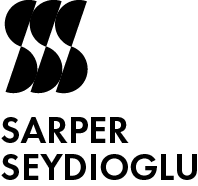STÆDIUM is a pioneering fitness product by Freeletics that transforms strength training into an engaging, interactive gaming experience. Combining high-quality equipment and AI-powered tracking, it introduced a product new category to the world: strength gaming.
Problem Statement
"As people spend more time at home and face increasing levels of inactivity, how might we transform traditional strength training into an engaging and immersive gaming experience that motivates users to achieve their fitness goals while seamlessly integrating digital, physical, and interactive elements?"
Role and Contributions
As part of the STÆDIUM project, my role focused on creating dynamic, visually engaging game experiences and ensuring a seamless user journey from product interaction to gameplay. During that time, I contributed to multiple facets of the product.
Product Ideation: Contributed to brainstorming and refining core concepts, aligning the product vision with user expectations and emerging fitness trends.
Design System Development: Designed for establishing a cohesive design system and style guide that unified visual and interactive elements across the STÆDIUM ecosystem.
Interaction Design: Mapped the end-to-end user flow centric to human-machine interactions, optimising the interactions to enable a seamless user experience.
Game Design: Designed proponents of multiple game modes with unique mechanics to ensure coherent interactivity, robust feedback systems, replayability, and sustained user engagement.
Design Process
The STÆDIUM design process was structured around agile sprints, enabling rapid iteration and focused progress. Each sprint began with a clear goal, ensuring alignment across all team members and disciplines.
A. Sprints and Prototyping: During each sprint, I worked closely with developers, game designers, and other stakeholders to refine features and interactions. High-fidelity prototypes were central to our process, allowing us to simulate gameplay, test mechanics, and validate the integration of physical and digital elements. These intricate prototypes served as a blueprint for development, bridging the gap between concept and implementation.
B. Collaboration, Implementation, and Deployment: Close collaboration was critical throughout the project. Developers provided technical insights that influenced design feasibility, while game designers ensured the mechanics were engaging and cohesive. User researchers shared feedback that guided refinement, though my focus remained on designing the product itself rather than conducting research.
By fostering open communication and maintaining tight feedback loops, we ensured that all components—from visual design to gameplay—aligned with the product vision. This collaborative and iterative process enabled us to deliver a polished, immersive experience.
Key Outcomes
These contributions culminated in the successful launch of STÆDIUM, introducing a new standard in interactive fitness. The platform’s games and cohesive design ecosystem elevated the product’s appeal, bridging the gap between fitness and entertainment. It was a milestone reached thanks to the team's dedication and the effective integration of design and functionality in creating a user-centric product.
Reflection
STÆDIUM was an opportunity to redefine how users engage with fitness products. My focus on versatile design and system-level thinking ensured that the games were not only fun and visually compelling but also deeply integrated with the product’s overall vision.
